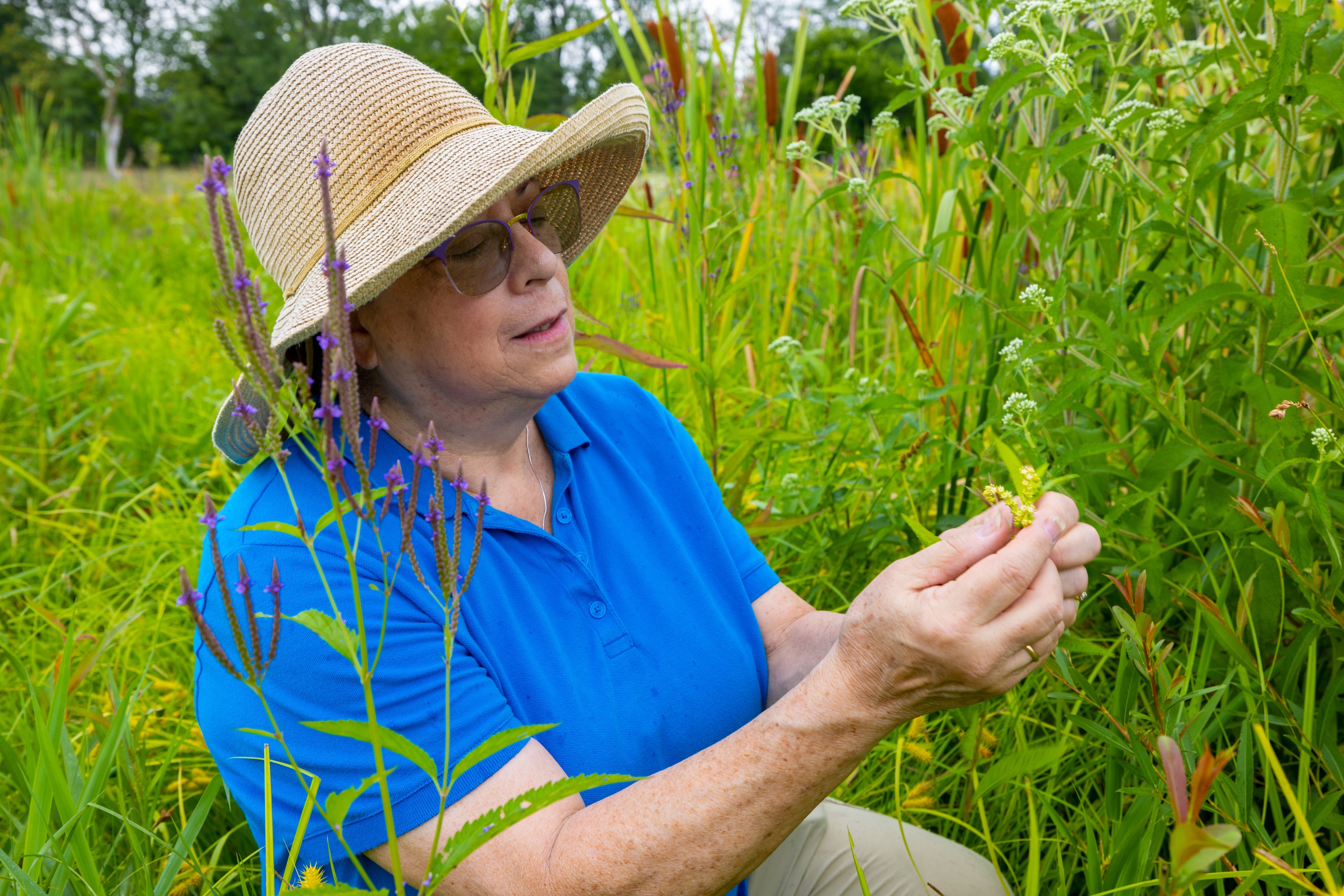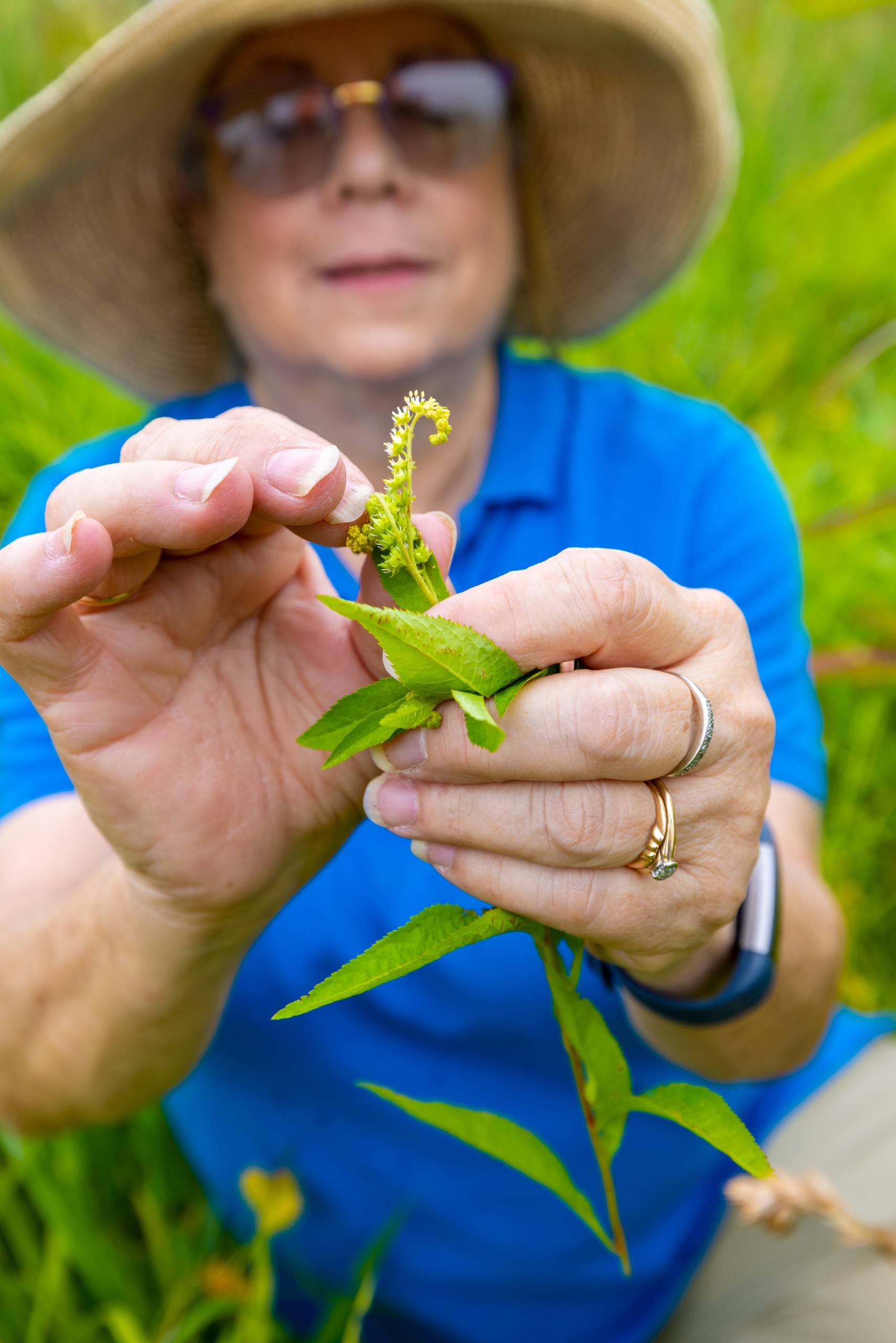
BGSU researchers studying plant species to better inform wetland design
Estimated Reading Time:
Dr. Helen Michaels leads team that aims to learn how plants can capture nutrients and which species promote ‘kidney’ function of wetlands
Wetlands have long been compared to human kidneys for their ability to filter water, a critical benefit that the state of Ohio is leveraging in its effort to protect Lake Erie from harmful algal blooms.
Constructing or restoring wetlands, however, comes with small but key decisions about what plant species to include – and not all plants are created equal in terms of capturing nutrients.
Because capturing and converting nutrients is such a critical function to those ecosystems, the state of Ohio is calling upon the expertise of Bowling Green State University researchers to study common wetland plants down to identify which species promote these functions more than others.
Led by Dr. Helen Michaels, an associate professor emerita in biological sciences, the research will examine a dozen plant species to better inform wetland design in the future.
“We want to know what species can help with some of the things that are important to the ‘kidney’ processes of a wetland that we’re trying to promote,” Michaels said. “People choose what goes in wetlands for a whole variety of reasons, but we want to provide a scientific basis for answering what might happen when you plant more of a certain species.”
Funded by a $383,677 grant from the Harmful Algal Bloom Research Initiative (HABRI), a research venture of the Ohio Department of Higher Education, Michaels and her team are out to see which commonly used plant species can inform future decisions about wetland creation and restoration.
In many cases, new wetlands are started by planting seeds. Knowing the capabilities of different common plant species can give scientists an understanding of which species capture nutrients better than others.

For areas that rely upon these wetlands – which are being studied in Ohio as a possible way to mitigate agricultural runoff into Lake Erie – Michaels and her team want to establish a basis for which plant species are up for the job.
“Generally, wetlands are designed with nutrient capture as one of many purposes, but a lot of the choices that go into planting these wetlands – many of which are established from seed – are based on what’s good for wildlife,” Michaels said.
“The actual nutrient capture abilities, the abilities to change flow patterns or drop nutrient-containing sediments is not something that has really been thought about or studied a lot. I wanted to do some research to help us understand what different species are capable of in terms of nutrient capture.”
Unlike previous research on the topic that examines nutrient levels by grinding leaves, Michaels and her team are also studying the entire root systems of 12 different species of plants to understand not only how plants capture nutrients, but also store them.
The root systems are especially important to understanding how plant species can perform this function. Floating, soft-bodied plants that can choke waterways typically hold onto nutrients for a short period of time, but they only account for some of what exists in a cold-climate wetland.
Many plant species that survive in places like Ohio can store nutrients long enough to withstand harsh winters – likely signaling their function within wetlands is different.
“When you look at plants that are rooted in the sediment, those are longer-lived species and they generally have storage structures because they come back the next year,” Michaels said. “Some of the growth the next year is based on what’s in the water in the spring, but a lot of it is based on what those species have grabbed and stored below ground.
“What kind of root systems they have influences how resistant they are to the flow of water and how much they can physically impede it. Things like grasses are flimsy and don’t slow down water like something that is more rigid and more deeply rooted. Slowing down the flow helps nutrient-carrying particles settle out where they can be taken up and stored.”
Though this project is not formally affiliated with H2Ohio, the state’s initiative to protect Lake Erie with which BGSU researchers are also involved, Michaels said she views this project as a spin-off with the same goal of better understanding wetlands.
As monitoring data emerge from research that began in 2020, Michaels said understanding how to change wetland design will be imperative.
“Our goal is to be able to answer the questions about what would happen if we had more of a certain species,” Michaels said. “We’re trying to ask questions that will help us better design wetlands in the future.”
Related Stories
Media Contact | Michael Bratton | mbratto@bgsu.edu | 419-372-6349
Updated: 10/03/2024 01:27PM




